Behavioral science enables pharma to acquire a greater understanding of its consumers and how to better message them in order to motivate them to change their behavior.
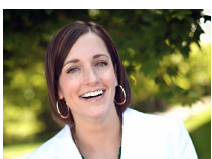 Are you a promoter or a preventer? According to the book, “Why We Resist," written by Syneos Health Communications’ experts Leigh Householder and Kathleen Starr, Ph.D., you will fall into either one category or the other. A promoter is defined as being motivated by growing a career, being the first to try a new procedure, or blazing a new trail. A preventer focuses more on keeping others safe or taking an action that is proven and trusted.
Are you a promoter or a preventer? According to the book, “Why We Resist," written by Syneos Health Communications’ experts Leigh Householder and Kathleen Starr, Ph.D., you will fall into either one category or the other. A promoter is defined as being motivated by growing a career, being the first to try a new procedure, or blazing a new trail. A preventer focuses more on keeping others safe or taking an action that is proven and trusted.
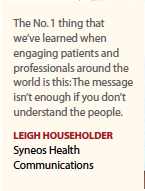 Behavioral science researchers have found patterns such as these that categorize how people look at the world, how they process information, and how they respond. Behavioral science identifies known motivators and can determine the way one might respond to the individual level. This knowledge allows marketers to better design messages that a type of person is more likely to respond to, whether they are a patient or a physician.
Behavioral science researchers have found patterns such as these that categorize how people look at the world, how they process information, and how they respond. Behavioral science identifies known motivators and can determine the way one might respond to the individual level. This knowledge allows marketers to better design messages that a type of person is more likely to respond to, whether they are a patient or a physician.
Understanding these segments can help marketers craft content in a way that each segment will best respond to. But hasn’t that been happening all along? Yes and no, say our experts.
“Behavioral science is the business we’ve always been in as marketers, we just haven’t always acted that way," says Brendan Gallagher, chief connected health officer, Digitas Health & Publicis Health. “Behind every behavior is a feeling and behind every feeling is a need."
Marketers cannot create messaging with the potential to change that behavior until they understand the patients and healthcare practitioner needs that drive their feelings and enable behavior.
Mr. Gallagher predicts that in the very near future, there will be even more data available to help understand what drives people as individuals, rather than segments, and that marketing technology will enable that individual-focused approach at scale.
“We’re already beginning to see this happening with machine learning-powered digital media, but expect to start seeing more of it in content, public relations, and customer relationship management," 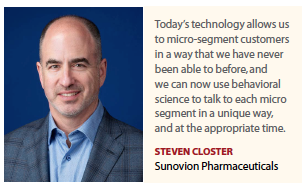 he says. “When great marketing moves patients to change the behaviors that impact their health, then healthcare marketing becomes simply healthcare."
he says. “When great marketing moves patients to change the behaviors that impact their health, then healthcare marketing becomes simply healthcare."
According to Dr. Starr, managing director, behavioral science at Syneos Health Communications, the pharmaceutical industry is getting better at asking what customers want, but it is not following through to the point of actually understanding how people make decisions and what else may be driving their behavior.
“Behavioral science allows us to filter what we’re hearing and what we’re seeing from our customers and more deeply understand those insights," Dr. Starr says.
Ms. Householder, executive VP, managing director, innovation and insight, at Syneos Health Communications, says it may seem like a complicated effort, but in reality, it is easy to segment people by what motivates them. To get to the heart of the mater, the team at Syneos has identified nine principles of behavioral science that everyone has in common, elements that are fundamental to how people are wired (see box text).
“Understanding the differences between the styles helps to quickly identify what kinds of content and communications will be most relevant," Ms. Householder says.
Behavioral science strategies succeed because they are based on the premise that a single approach doesn’t work for every person. Barriers to action can include a patient’s adherence, a patient’s reluctance to start a new therapy, or even a healthcare provider’s clinical inertia, says Meredith Terry, Ph.D., director, behavioral strategy at MicroMass Communications.
“If you are trying to get patients or healthcare providers to do something different and you are not achieving the desired results with traditional marketing or educational approaches, it’s time to 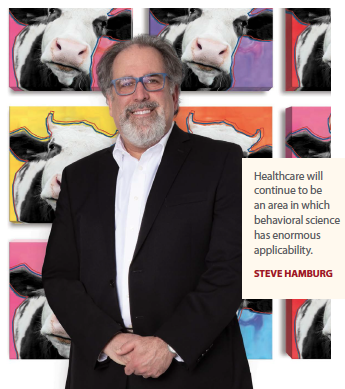 reexamine the strategies you are using to change patient or provider behavior," Dr. Terry says. “Traditional marketing approaches can only take your brand so far. A behavioral science solution includes evidence-based strategies to change behavior."
reexamine the strategies you are using to change patient or provider behavior," Dr. Terry says. “Traditional marketing approaches can only take your brand so far. A behavioral science solution includes evidence-based strategies to change behavior."
Healthcare was actually one of the first industries to invest in the concept of nudge — a concept that proposes positive reinforcement and indirect suggestions as ways to influence the behavior and decision making of groups or individuals — and to investigate what motivators and behavioral economics can actually change behavior, Ms. Householder says. However, even with all this new knowledge, much of the industry continues to communicate in ways that are outdated and unexamined.
“The No. 1 thing we’ve learned from engaging patients and professionals around the world is this: the message isn’t enough," Ms. Householder says. “No matter how compelling the science, how clear the benefit, it’s not enough if you don’t understand the people."
“The pharmaceutical industry, to a large degree, still relies on traditional qualitative research to reveal how healthcare decision makers think about things," says Steve Hamburg, managing partner, chief creative officer, Calcium. “Traditional customer research introduces any number of biases into the evaluative equation. In contrast, behavioral science seeks to avoid these biases and place a clearer scientific lens on why people actually behave the ways they do."
Dr. Terry says she is seeing a growing interest in behavioral science within the industry.
“Companies are interested because they want to improve patient outcomes," she says. “They have the drug that will help patients live longer and behavioral science can allow them to use strategies to help patients have better lives and support those adherence goals in the long term. It’s the two sides of the same coin serving the industry’s major objective."
Steven Closter, VP, marketing, at Sunovion Pharmaceuticals agrees.
“Today’s technology allows us to micro-segment customers in a way that we have never been able to 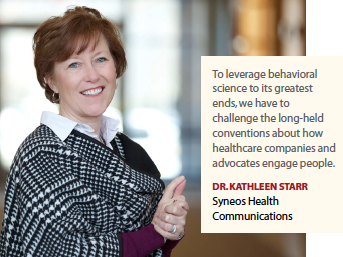 before, and we can now use behavioral science to talk to each micro segment in a unique way, and at the appropriate time. By combining the heuristics and biases of behavioral science with today’s micro-communications strategies, we can better understand and serve customers over time."
before, and we can now use behavioral science to talk to each micro segment in a unique way, and at the appropriate time. By combining the heuristics and biases of behavioral science with today’s micro-communications strategies, we can better understand and serve customers over time."
The Challenges of Changing Behaviors
If behavioral science is the key to successfully changing the behaviors of patients and physicians, then why aren’t more pharma companies using it?
Possibly because although behavioral science is a term we are all familiar with, it’s a concept and process that is difficult to get our heads around, and even more challenging to make actionable. While the industry has the desire to use behavioral science, it may not have the tools to make it happen.
Another reason for the hesitation may be that people do not understand behavioral science and may not buy into its power. Ms. Householder says she had a learning curve from working on the book with Dr. Starr. “Previously to working with Kathleen, if I had heard about the thought of segmenting by motivation or by behavioral science I would have assumed it was incredibly complex and nuanced," she says. “But there are really simple things we can do to divide people into camps and be able to support them in ways that are relevant to how they’re personally wired."
This also has been Mr. Closter experience.
“While changing behavior is not easy, with regard to marketing it takes less information than you may think to understand and influence or even change behaviors," Mr. Closter says. “It’s a matter of providing the right information to the right customer at the right time. The heuristics and biases of behavioral economics are the cognitive short-cuts that simplify this."
And it may be a hard sell to upper management as well, as it means an entirely new way of building strategies.
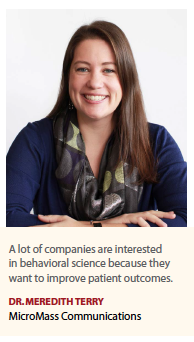 “To leverage behavioral science to its greatest ends to meet a brand’s goals, pharmaceutical companies will have to challenge the long-held conventions about how they engage with patients and caregivers," Ms. Householder says. “Advocating for this type of new approach isn’t easy. It requires deep insight and bold moves that interrupt some thinking that the healthcare industry is currently pretty comfortable with."
“To leverage behavioral science to its greatest ends to meet a brand’s goals, pharmaceutical companies will have to challenge the long-held conventions about how they engage with patients and caregivers," Ms. Householder says. “Advocating for this type of new approach isn’t easy. It requires deep insight and bold moves that interrupt some thinking that the healthcare industry is currently pretty comfortable with."
Despite the challenges, healthcare will continue to be an area in which behavioral science has enormous applicability, Mr. Hamburg says.
“Health itself is a foundational driver of human behavior; yet how we think, feel, and act about health are anything but simple. And our system of healthcare delivery takes this complexity to an exceedingly high level," he says.
Physician behavior, in particular, is notoriously difficult to predict based only on what physicians say about their roles. “Physicians are supposed to behave purely rationally, in an evidence-based manner; they’re not supposed to be influenced by emotions or other factors," he says. “Yet behavioral science has shown us that even supposedly rational decision making, across diverse fields of endeavor, can be surprisingly governed by deeper impulses and motivations."
Understanding these deeper behavioral drivers will help the industry better understand how to communicate with customers in an effective and mutually beneficial manner. Traditional selling methods may be revealed to be less productive than less confrontational, and more psychologically astute, methods.
“Based on this kind of knowledge, we can be empowered to create communications that connect more deeply, authentically, and therefore persuasively with customers," Mr. Hamburg says.(PV)
~~~~~~~~~~~~~~~~~~~~~~~~~
The Nine Principles of Influence
These nine principles are what everyone has in common. They are shared truths about being human, although everyone experiences them in slightly different ways. These truths can act as barriers that wire us to resist health behavior change. But, they also have the power to activate change. For each principle, an accompanying question shows how to make the switch from resistance to activation.
1. Core emotional needs drive us
Q. What core needs does the health condition or treatment violate?
2. Mental processing is limited
Q. What could make this decision or change feel overwhelming?
3. Irrational shortcuts guide decision-making
Q. What cognitive biases are people likely bringing to this decision?
4. We understand the present through the past
Q. What past experiences could be impacting openness or ability to change?
5. Self is a social phenomenon
Q. What social norms and influences might impact this decision or change?
6. Goals organize our behavior
Q. What higher order goals could this change or decision align to?
7. Context is critical to our habits
Q. What triggers, gaps and competing cues might prevent a person from building a new habit?
8. We constantly redefine normal
Q. What limitations or health risks are people accepting today that they don’t have to?
9. Motivation is fleeting
Q. What can we do to continue to fill the leaky bucket of motivation and give people resilience to try and try again?
Source: Why We Resist, by Kathleen R. Starr, Ph.D., and Leigh Householder, Syneos Health
~~~~~~~~~~~~~~~~~~~~~~~~~
Behavioral Science Gaining Ground in Pharma
Experts describe how they see the use of behavioral science impacting the future of marketing strategies.
 Ric Cavieres
Ric Cavieres
Executive VP, Strategy, Markets and Consulting, OZ
In the last five years we have moved from the Information Age to the Experience Age.
Behavior sciences, such as anthropology, focus on systematically observing human behaviors and interactions and extrapolating how to improve products and services to make them more relevant, easier to use, and engaging. PillPack, recently acquired by Amazon, is an excellent example of behavior sciences transforming the human experience and medication adherence.
The founder observed his father was struggling to coordinate and take multiple medications after heart surgery. The solution? A product that combines all daily/split-daily medications into one small white package and a service that delivers it to a patient’s door monthly or quarterly, making taking medicine far easier. PillPack literally saves lives as nonadherence leads to 125,000 preventable deaths a year in the United States. Pharma can learn a lot from the PillPacks of the world, a service they could and probably should have envisioned around the products they supply, and leverage behavior sciences to drive sales and marketing strategies and initiatives that align to how customers think, feel, and engage, rather than solely relying on customer cohorts derived from demographic data.
 Lyn Falconio
Lyn Falconio
Chief Marketing Officer, Publicis Health
Behavioral science already has huge impact on marketing strategies, but it will play a profoundly bigger and more outcomes-connected role in the near-term future. The data and insights gleaned from behavioral science already lets marketers go deeper than ever before, allowing organizations to find the proverbial needle in the haystack. But as marketers employ increasingly more sophisticated research techniques and have greater understandings of patients’ and HCPs’ behaviors and needs, we’ll know exactly which levers to pull — and precisely at which moments —to more effectively reach and motivate people.
Marketers will use behavioral science to go beyond simply mapping the consumer/patient journey to uncover “moments of meaning." Advanced behavioral science will become the gateway to far more actionable and predictive intelligence. In the study of human behavior, past and present function as windows to the future. What marketers learn from people’s decisions and actions can help draw conclusions and make predictions about how to react and move forward.
With more behavioral science at the center of what we do, marketing strategies of the future can become far more precise, efficient, and predictable. These elements are essential ingredients to unlocking consumer- and patient-centricity. We can’t evolve into a truly consumer-centric approach to marketing without starting with a careful analysis of human behavior.
 Bob Gabruk
Bob Gabruk
Managing Director, 81qd
@81qd
Predictive analytics fueled by real-world healthcare data, has yet to be fully realized by biopharmaceutical companies but is poised to revolutionize their business strategies. Advanced analytics can find healthcare practitioners who are currently managing yet-to-be-diagnosed patients with hard-to-diagnose diseases and identify impactful clinical networks that can be leveraged to change clinician behavior.
Certain clinicians impact the decision-making of others in the healthcare community and have the unique ability to impact the care of patients well beyond their own practices. These clinicians are hard to find.
Understanding the existing relationships among healthcare professionals not only optimizes a pharma company’s ability to connect with them, but it also maximizes the impact of marketing communications in achieving the desired clinical behavior change.
 Paul Golota
Paul Golota
CEO, MedSurvey
As we continue to study what drives people to make decisions, it is the companies and brands deploying marketing strategies that leverage all new information that will have a leg up on their competition. At the core of every marketing campaign is an effort to win a decision maker’s attention, followed by an effort to persuade him or her to buy a product or a service.
All decision makers in the B2B or consumer environments are bombarded by an endless stream of information on their televisions, phones, tablets, magazines, etc. The relevant questions in marketing have become: where do you capture their attention? How do you capture their attention? And what do you do with that attention? Understanding how people consume information and where they direct their eyeballs can help with the where and the how, but what do you do when you have someone’s attention? Many studies have shown that while people consider themselves to be more rational in their decision-making, most of the decisions, especially purchasing, we make are rooted in emotion.
Understanding these levers becomes critical to any organization looking to promote a product or a service. From using social influencers to introducing habit-forming behaviors, marketing strategies will continue to evolve with our understanding of the human psyche.
 Lee Krauss
Lee Krauss
Managing Director, Client Services, Carling Communications/Fishawack Health
I believe that behavioral science will completely drive marketing strategies and initiatives in the very near future. The observation of human action has always played a critical part in strategy development as we have all participated in countless hours of qualitative research behind the glass. With data collection becoming easier and less expensive, our predictive decision-making capabilities will grow to become more of a standard practice across the industry. Intuition and experience used to be skills that took time to form and sharpen. Data output now validates this skill set faster than the application of the skills themselves.
The battle for mindshare will continue, regardless of the advancements in this space. This is why we are seeing more success in platforms that have faster visual appeal with compressed, meaningful content, i.e., marketing initiatives being driven by human observation. When you add in the personalization element and frequent optimization, you now have a complete marketing strategy that is 100% driven from behavioral science.
 Ron Lacy
Ron Lacy
VP, Products & Innovation, UBC
Companies seeking out key influencers who advocate for a disease state and can promote a company’s therapy will require the deployment of behavioral science techniques, including a focus on present moment communications, to create a sense of actionable steps patients and caregivers can take.
 Deborah Lotterman
Deborah Lotterman
Chief Creative Officer, Precisioneffect
The application of behavioral science to marketing is the logical expansion of the guiding principle “know thy customer." It’s not enough to understand demographics or even psychographics. True and lasting change will happen when physicians adopt therapies in categories where hasn’t been one, patients embrace behaviors and routines that improve health and prolong life. Behavior change requires people to change their minds first.
Behavioral science teaches us that change is evolution, a series of incremental shifts that permit the individual to reach his or her conclusion and feel good about the choice. Truly understanding this — in their own set of incremental shifts — will force marketers to develop nuanced programs that move physicians and patients along this continuum, delivering insights and value at every step. Marketers will need to be much more deeply immersed in the lives, aspirations, and challenges of subjects.
Content will need to be more responsive to external events and forces. Marketers will have more data than ever before, but driving decision-makers through the tectonic shifts in medicine will demand true vision, empathy, and creativity.
 Jeremy Lutsky
Jeremy Lutsky
Counsel, Manatt,
Phelps & Phillips
Pharmaceutical/medical device marketing teams will increasingly focus on the behavioral patterns of their target audience — prescribers and patients. Companies are increasingly purchasing data that provides very specific insight into which healthcare professionals (HCPs) prescribe which drugs, in what amounts, how frequently, to whom do they prescribe, etc. In addition, marketing teams routinely conduct focus groups with HCPs and patients to see how their messages resonate. Like other industries, behavioral science will become more exact and messaging will likely be both overt and subliminal. Notwithstanding the above, the use of behavioral science in the pharma/device industry may be curtailed a bit by the heavy governmental regulation and desire to protect prescribers and patients. Fraud and abuse laws are intended to curb inappropriate advertising and maintain the sanctity for prescribers to make decisions solely in the best interests of their patients. As companies become more sophisticated, the government will likely ramp up its scrutiny of marketing materials.
 Anshal Purohit
Anshal Purohit
President, Purohit Navigation
Market success or failure is often determined by our system’s ability to adopt an algorithmic change, which makes behavioral science insights increasingly critical for successful strategic planning. The role of commercial teams from marketing to sales is implicated significantly as we consider behavioral science and the role it plays in product success, and we must consider individual and institutional behavior as we plan forward. With the launch of more healthcare solutions, roles and responsibilities of key individuals from HCPs to AHCPs and beyond are shifting dramatically. Questions as fundamental as “Who is responsible for the diagnosis and treatment of this disease?" are increasingly raised, and answers are not as clear cut as they used to be. Diseases that once required specialist care can now be treated by primary care physicians and internal medicine physicians. Companies entering markets where this dynamic exists must model behavior throughout the category, gaining insights about motivating and educating their target audiences to change long-ingrained algorithmic thinking. This dynamic is compounded at the institutional level, where systemic protocols have been in place for decades. Mapping institutional behavior and applying science-based models will be key to uptake and will ensure that stakeholders are supported as they implement change.
 Brian Williams
Brian Williams
VP, Chief Digital Officer, Life Sciences Consulting, Cognizant
As clinical data extends our understanding of social and behavioral impacts on health, new opportunities will arise for biopharma companies to define value outside the traditional moment of intervention in a doctor’s office or the home administration of therapy. The early indicators of value creation and capture outside of clinical intervention are co-prescribed apps, which are growing in number and for which biopharma companies have greater clarity on regulatory approval. In addition, commercial and governmental reimbursement plans are evolving to outcomes- and value-based models, providing economic support to nontherapeutic interventional strategies. As technology, clinical knowledge, and reimbursement plans evolve, manufacturers will be able to create integrated solutions that delay or eliminate the onset of disease in a market that places equal economic value on health and healthcare.


















